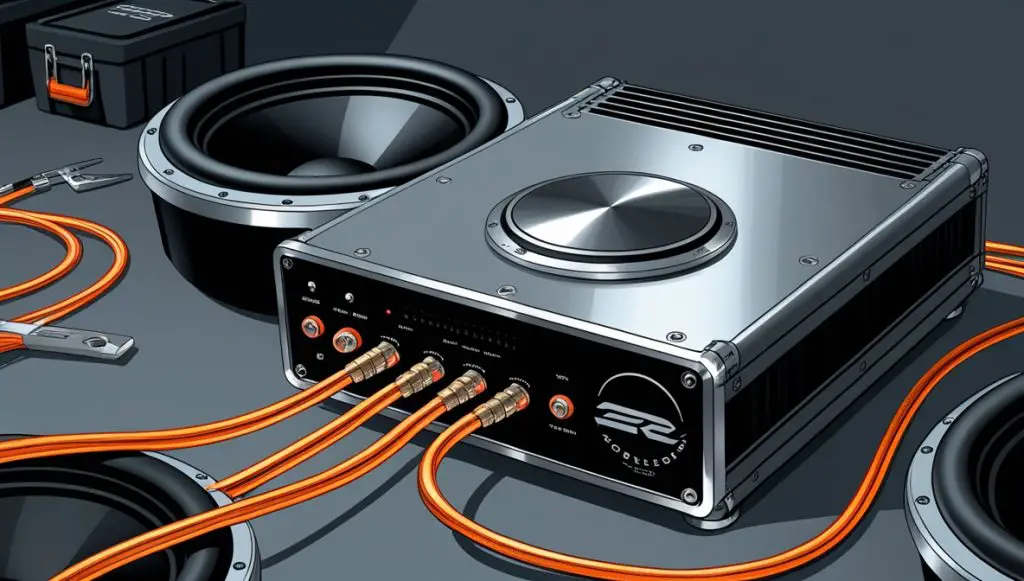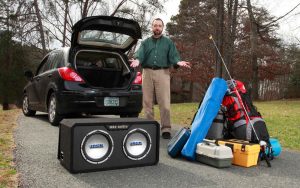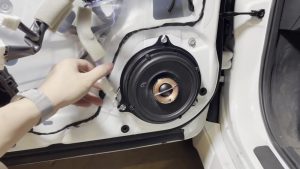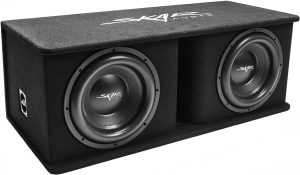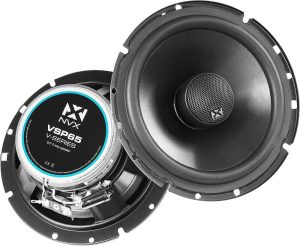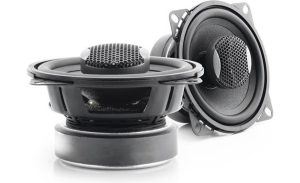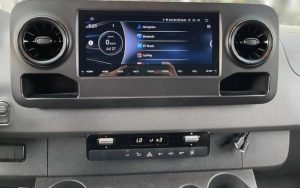Want to shake your house to its foundations with booming bass? Wiring multiple subwoofers to a single amplifier, a process often referred to as {wiring 2 subs to mono amp}, is a great way to achieve a powerful, unified low-frequency sound. This guide will walk you through the process, step by step, ensuring you get the best possible results.
Contents
- Understanding Mono Subwoofer Wiring
- Why Wire Subs to a Single Amp?
- Choosing the Right Amp for Your Subs
- Gathering Your Tools and Materials
- The Series Wiring Connection Method
- The Parallel Wiring Connection Method
- Which Wiring Method Should You Choose?
- Making the Connections Safely & Securely
- Testing Your Wired Subwoofer System
- Troubleshooting Common Wiring Issues
Understanding Mono Subwoofer Wiring
Mono subwoofer wiring involves connecting two or more subwoofers to a single amplifier channel designed for mono output. This differs from stereo, where each subwoofer would receive its own dedicated channel. The key here is that the amplifier sends the same signal to both subwoofers simultaneously, resulting in a unified and more powerful bass response. This is ideal for creating a single, cohesive low-end soundstage.
Understanding the difference between series and parallel wiring is crucial. Series wiring increases impedance (resistance), while parallel wiring decreases it. Choosing the correct method depends on your amplifier’s capabilities and the impedance of your subwoofers. Getting this wrong can damage your equipment.
Why Wire Subs to a Single Amp?
Many audiophiles choose to wire multiple subs to a single amp for increased power and output. A single, powerful amplifier can often provide more clean, undistorted bass than two smaller amplifiers. This results in a cleaner, more controlled low-end. Additionally, using a single amp simplifies your setup, reducing the number of components and wiring needed.
Furthermore, a mono setup creates a more consistent and unified bass response throughout your listening area. With two separate amps, you might experience slight timing differences or variations in output level, leading to an uneven bass experience. A single amp avoids these potential problems.
Choosing the Right Amp for Your Subs
Selecting the right amplifier is paramount. You need an amplifier that’s powerful enough to handle the combined impedance of your subwoofers and capable of delivering the desired sound pressure level (SPL). Check your subwoofers’ specifications to determine their impedance (usually 2, 4, or 8 ohms).
Next, carefully consider the amplifier’s power output (RMS wattage) and make sure it exceeds the combined power requirements of your subwoofers. Always choose an amp rated for the lowest impedance your wiring configuration will produce. Don’t overload your amp; it could lead to overheating and damage.
Gathering Your Tools and Materials
Before you begin, gather the necessary tools and materials. You’ll need your two subwoofers, a mono amplifier, amplifier wiring (typically 8-gauge or thicker for larger systems), speaker wire, wire strippers, crimp connectors or soldering iron and solder (if soldering), and a multimeter (to check impedance and wiring).
Additionally, you’ll need appropriate tools for securing the wiring, such as zip ties or cable clamps. Ensure you have a safe and well-lit workspace. Having all your materials ready will make the process much smoother and safer.
The Series Wiring Connection Method
Series wiring connects the positive terminal of one subwoofer to the negative terminal of the other. The remaining positive and negative terminals then connect to the amplifier’s output terminals. This method doubles the total impedance. For example, two 4-ohm subwoofers wired in series will present an 8-ohm load to the amplifier.
It’s important to carefully connect the wires, ensuring a secure connection to avoid any shorts or loose connections. Double-check your connections before powering on the system. Incorrect series wiring can lead to reduced output power or even damage to your equipment.
The Parallel Wiring Connection Method
Parallel wiring connects all the positive terminals of the subwoofers together, and all the negative terminals together. These combined positive and negative leads are then connected to the amplifier’s output terminals. This method halves the total impedance. For example, two 4-ohm subwoofers wired in parallel will present a 2-ohm load to the amplifier.
Similar to series wiring, neat and secure connections are crucial. Make sure all connections are tight and properly insulated. Always double-check your wiring before powering up to avoid potential issues.
Which Wiring Method Should You Choose?
The choice between series and parallel wiring depends on your amplifier’s impedance capabilities and your subwoofers’ impedance. Consult your amplifier’s manual to determine the minimum impedance it can handle. Never connect subwoofers resulting in an impedance lower than the amplifier’s minimum.
Generally, if your amplifier can handle a lower impedance, parallel wiring will provide more power. However, if your amplifier only handles higher impedance, series wiring is the only safe option. Prioritize safety over higher power output.
Making the Connections Safely & Securely
Safety is paramount when working with electrical components. Always disconnect the power before making any connections or adjustments. Use appropriate wire strippers to cleanly remove the insulation from the speaker wire, avoiding any damage to the copper conductors.
Secure your connections using crimp connectors or soldering, depending on your preference and skill. Crimp connectors offer a quick and easy solution, while soldering provides a more robust and reliable connection. Use heat shrink tubing to further insulate and protect your connections.
Testing Your Wired Subwoofer System
Once all connections are made, carefully reconnect the power. Start with the volume at a low level and gradually increase it to test your system. Listen for any distortion or unusual noises. If you hear distortion, immediately reduce the volume and check your connections.
If everything sounds good, gradually increase the volume to your desired level. Enjoy your enhanced bass response! If you notice any problems, refer to the troubleshooting section below.
Troubleshooting Common Wiring Issues
If you’re experiencing problems, such as no sound, distortion, or humming, systematically check your connections. Ensure all wires are securely connected and that there are no shorts or loose connections. Use a multimeter to verify the impedance of your subwoofer setup.
If the problem persists, check the amplifier’s fuses and ensure they are not blown. If you’re still having issues, consult your amplifier and subwoofer manuals or seek assistance from an audio professional.
Wiring two subs to a mono amp can significantly enhance your audio experience, providing powerful and controlled bass. By following these steps and prioritizing safety, you can create a system that delivers the deep, resonant sound you’ve been looking for. Remember to always consult your equipment’s manuals and prioritize safe practices. Happy listening!
